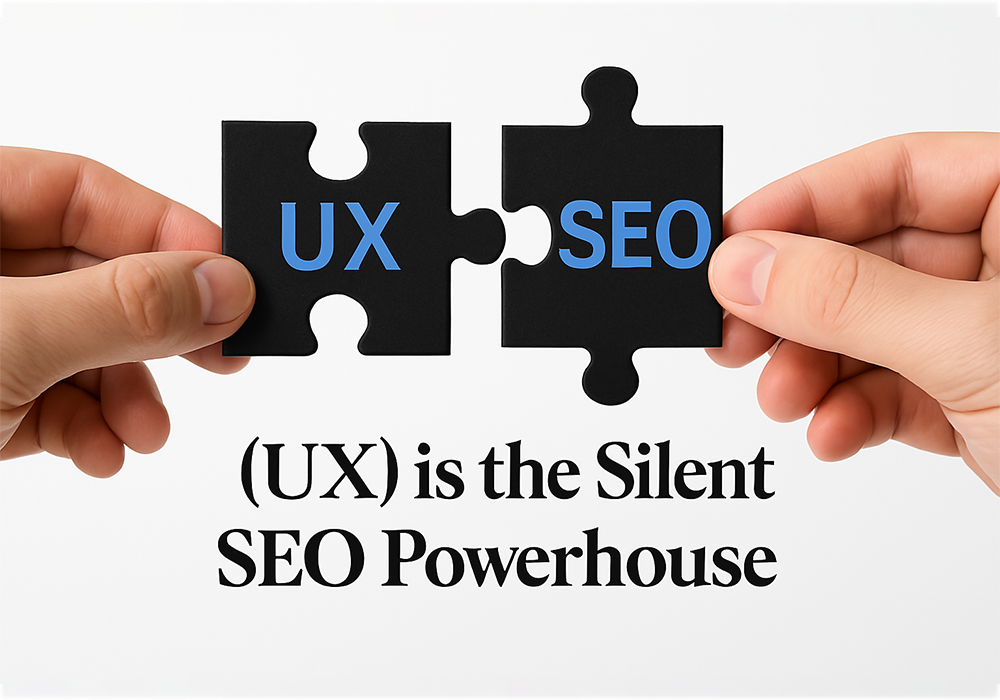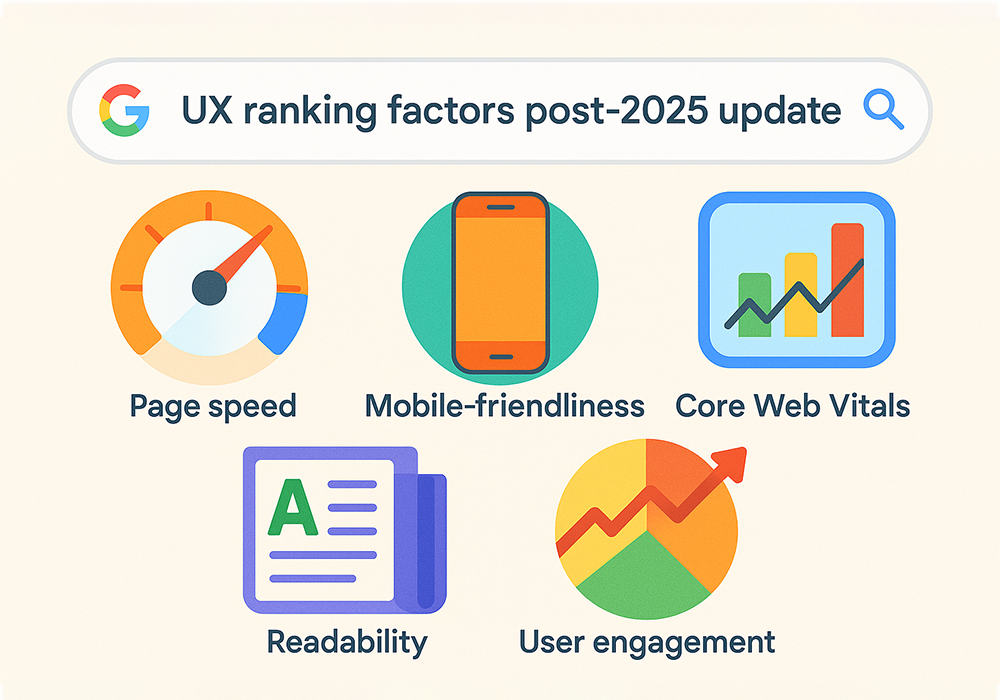Why User Experience (UX) is the Silent SEO Powerhouse in 2025: Insights After Google’s March 2025 Core Update

After Google’s March 2025 Core Update, User Experience (UX) has become a more prominent and impactful factor in search engine optimization (SEO). User engagement and pleasure are becoming more and more important to Google as markers of high-quality content. Websites with a favorable user experience (UX), such as mobile-friendly designs, easy navigation, and quicker loading times, are more likely to rank higher in search results. Conversely, sites with poor UX, such as slow loading times or intrusive ads, may experience a drop in rankings.
Why is UX so important for SEO in 2025?
Search Engine Optimization (SEO) and User Experience (UX) have developed into complimentary fields that are crucial for success on the internet in the digital age. The importance of user experience (UX) in influencing search rankings has become indisputable as Google’s algorithms get more complex. Businesses who do not focus user experience (UX) will find it difficult to be visible in 2025, whereas those that incorporate UX into their SEO tactics will prosper.
What are the key UX factors that will influence SEO in 2025?

1. Page Speed and Core Web Vitals
Since the introduction of Core Web Vitals, page speed, interactivity, and visual stability have become central to both UX and SEO. In 2025, Google’s algorithm gives even more weight to these metrics. A sluggish website frustrates users, increases bounce rates, and sends negative signals to search engines. Optimizing images, leveraging browser caching, and using modern coding practices like lazy loading are now non-negotiable for SEO success.
2. Mobile-First Design
With over 70% of users accessing the web via mobile devices, mobile-first indexing is no longer just a concept, it’s the standard. Websites that are not fully responsive or have cluttered mobile layouts risk being penalized. A seamless mobile experience-fast loading, thumb-friendly navigation, and legible content-leads to lower bounce rates and longer session durations, both of which positively influence rankings.
3. Clear and Intuitive Navigation
Users shouldn’t have to think twice about where to click. A clean, well-structured site architecture helps users find information faster and helps search engine crawlers understand the hierarchy of your content. Logical navigation structures with breadcrumbs, internal linking, and an easily accessible menu all contribute to improved engagement and crawlability.
4. Content Readability and Layout
In 2025, how you convey information is just as important as what you say. Google gives preference to easily readable information. This means using proper heading structures (H1, H2, H3), short paragraphs, bullet points, and white space to enhance readability. Engaging visual elements like images, videos, and infographics also support the user’s understanding and keep them on the page longer.
Behavioral Metrics: How Google Measures UX
Google now puts more emphasis on behavioral signals to evaluate UX quality. Metrics like:
Click-Through Rate (CTR)
A well-optimized title and meta description attract more clicks from search results.
Dwell Time
The longer a user stays on a page, the more valuable the content appears to Google.
Bounce Rate
A high bounce rate indicates the user didn’t find what they were looking for, often due to poor UX.
Pogo-Sticking
When users quickly return to search results after visiting a page, it’s a strong sign that the page didn’t meet expectations.
Improving UX addresses these metrics directly, leading to better rankings.
UX and E-E-A-T: A Stronger Connection in 2025
In 2025, UX and E-E-A-T work hand in hand. A smooth, user-friendly website boosts trust, highlights expertise, and strengthens credibility—key factors for better rankings and user engagement.
What is E-E-A-T?
E-E-A-T stands for Experience, Expertise, Authoritativeness, and Trustworthiness. It’s a concept from Google’s Search Quality Evaluator Guidelines used to assess the quality of content on the web. Here’s a quick breakdown:
Experience:
Does the content creator have first-hand experience with the topic? For example, a review written by someone who has actually used the product or visited the place has higher value.
Expertise:
Is the content created by someone with knowledge or skill in the subject area? This is especially important for topics like health, finance, and law (called YMYL – “Your Money or Your Life”).
Authoritativeness:
Is the website or author recognized as a go-to source for this information? Do others reference or cite them?
Trustworthiness:
Can users trust the content and the website? This includes having secure websites (HTTPS), transparent contact info, accurate facts, and honest intentions.
Conclusion: UX is Not Optional It’s Essential for SEO
As we move deeper into 2025, SEO without UX is like a car without wheels it won’t get you far. Google’s growing focus on user satisfaction means your website must do more than just exist. It needs to perform, engage, and delight.
Investing in user experience is no longer just a design decision it’s a strategic SEO move. Whether you’re revamping your website or planning your next campaign, always ask: “Is this the best possible experience for my users?” If the answer is yes, search engines will likely reward you.
If you’re looking for expert help to optimize your website for both SEO and UX, consider partnering with a trusted SEO agency in Kerala. A local agency with deep knowledge of the latest trends can help ensure your site stays competitive in the ever-changing digital landscape.